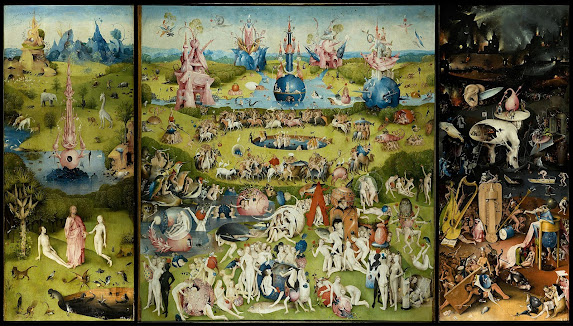Anthony Morelli Art Analysis
Artistic Analysis of "HMS Erebus in the Ice" by François Etienne Musin
Anthony Morelli
Introduction
For my art analysis, I have chosen the oil painting entitled "HMS Erebus in the Ice" by artist François Etienne Musin. This is the same painting I had chosen for my introductory blog and I found it so interesting that I decided to dig deeper and do a thorough analysis of this work. I will analyze how all of the basic elements of art such as line, shape, color, space, symmetry, movement, scale, and pattern, all come together to help make this a great piece of art. But first, it's important to understand the historical context that gives this work meaning.
History
The painting itself was made in 1846 by the Belgian, marine artist François Etienne Musin (1820-1888). The painting depicts the HMS Erebus, which was one of the ships two ships on the famous lost Franklin Expedition. The purpose of the expedition was to explore the waters of northern Canada, which at the time was completely unmapped and so remote it was like another planet. The goal of exploring this area was to find a "northwest passage" from Europe to Asia so that they didn't have to take the long way around Africa or South America. However, the expedition set out in 1845 and was never seen again, and it was not until very recently we pieced together the whole story of what happened to the expedition, but that isn't a story for now.
Analysis
Line: The use of line in the piece I feel is especially clear in the rigging of the ship, which helps convey the complexity of an expedition like this and the ship itself, at the time these ships were at the peak of maritime technology. Line is also present in the cracks in the ice where the men are standing, which to me helps convey the inherent danger that comes with working in the arctic, they are quite literally on thin ice.
Shape: Shape is very clearly used in the ice, with all of its sharp and strong edges it helps give the viewer a sense of how dangerous the ice can be and how in comparison to the small people and the ship, it is much much tougher.
Color: The difference in color between the natural things in the painting (ice, ocean, clouds) and the unnatural things (people, ship) is very noticeable in the painting. I think the artist did this to show that these unnatural things are foreign to this land. Additionally, the red and brown colors of the people/ship feel warm in comparison with the surrounding environment with it's blues and greys.
Space: The artist uses space to help convey that they are going into a very densely packed field of ice; if you look to the right of the ship (where the ship was coming from) you can see more open seas with less and less icebergs the further back you look. However, if you look to the left (where the ship is going towards) you see the closer, icebergs that imply a dense ice field.
Symmetry: In this painting, you can see symmetry/balance in the contradictions from left to right and up to down, the dense ice and clouds on the left are balanced by the open ocean and clearer sky on the right, and the dark ice on the bottom is balanced by the light sky on the top.
Movement: The main sense of movement in this piece is the movement of the ship from right to left from the open ocean to the dense ice, however, there is a sense of movement in the waves around the ship that makes the look like it's rocking back and forth. This represents the potential danger and risk to the ship in this perilous expedition.
Scale: The main thing that stands out about the scale in this painting is the iceberg to the left and how much bigger it is than the ship and the people. This clearly represents the power of the ice and it's imposing force. This is ironic because we eventually learned that the ice locked the ships into place and prevented the expedition from continuing forward leading them to abandon the ships.
Pattern: The main pattern in this work is the repeating icebergs shrinking from left to right. This gives me the feeling that the ship was following these growing icebergs to find their way into the northwest passage.
bibliography
“Visit Us.” HMS Erebus in the Ice, 1846 | Royal Museums Greenwich, www.rmg.co.uk/collections/objects/rmgc-object-14798. Accessed 5 Feb. 2024.
“What Happened to the Crew of Erebus and Terror?” What Happened To The Crew Of Erebus and Terror?, www.rmg.co.uk/stories/topics/what-happened-to-erebus-terror-crew-true-story. Accessed 5 Feb. 2024.



.jpg)
Hey Anthony,
ReplyDeleteThis painting is one of the many pieces that has caught my eyes because of how meaningful it represents. I love that you decided to analyze every basic element that is in this painting because there is a lot of them, and I don't think it can't only be describe in one element.
This comment has been removed by the author.
ReplyDeleteThis comment has been removed by the author.
ReplyDeleteYour insightful analysis of François Etienne Musin's "HMS Erebus in the Ice" seamlessly intertwines historical context with a keen examination of art elements. Your exploration of line, shape, color, space, symmetry, movement, scale, and pattern not only highlights the technical prowess of the painting but also skillfully connects these elements to the perilous narrative of the lost Franklin Expedition. The way you dissect the visual components and their emotional impact makes for a captivating and enriching interpretation.
ReplyDelete